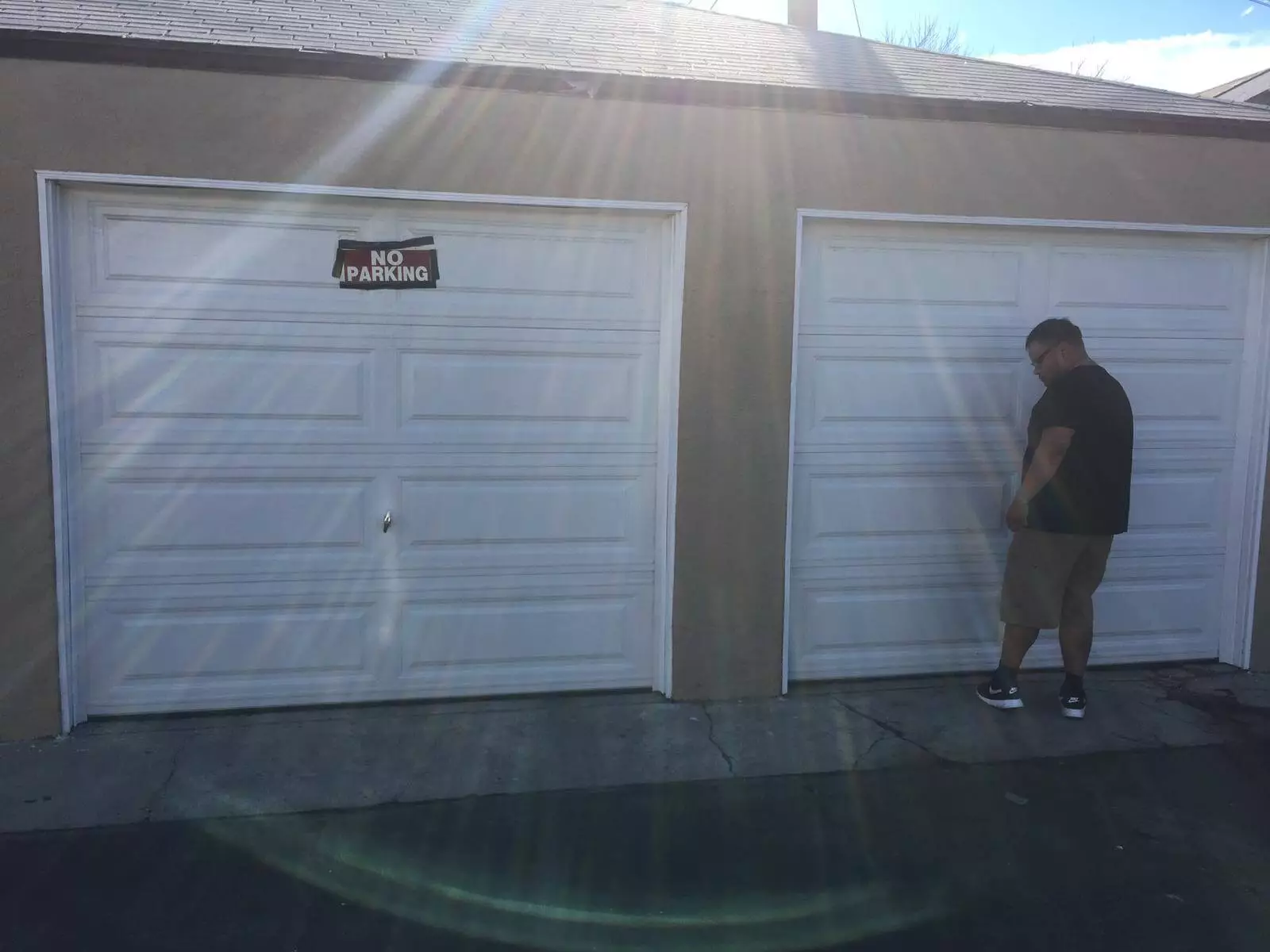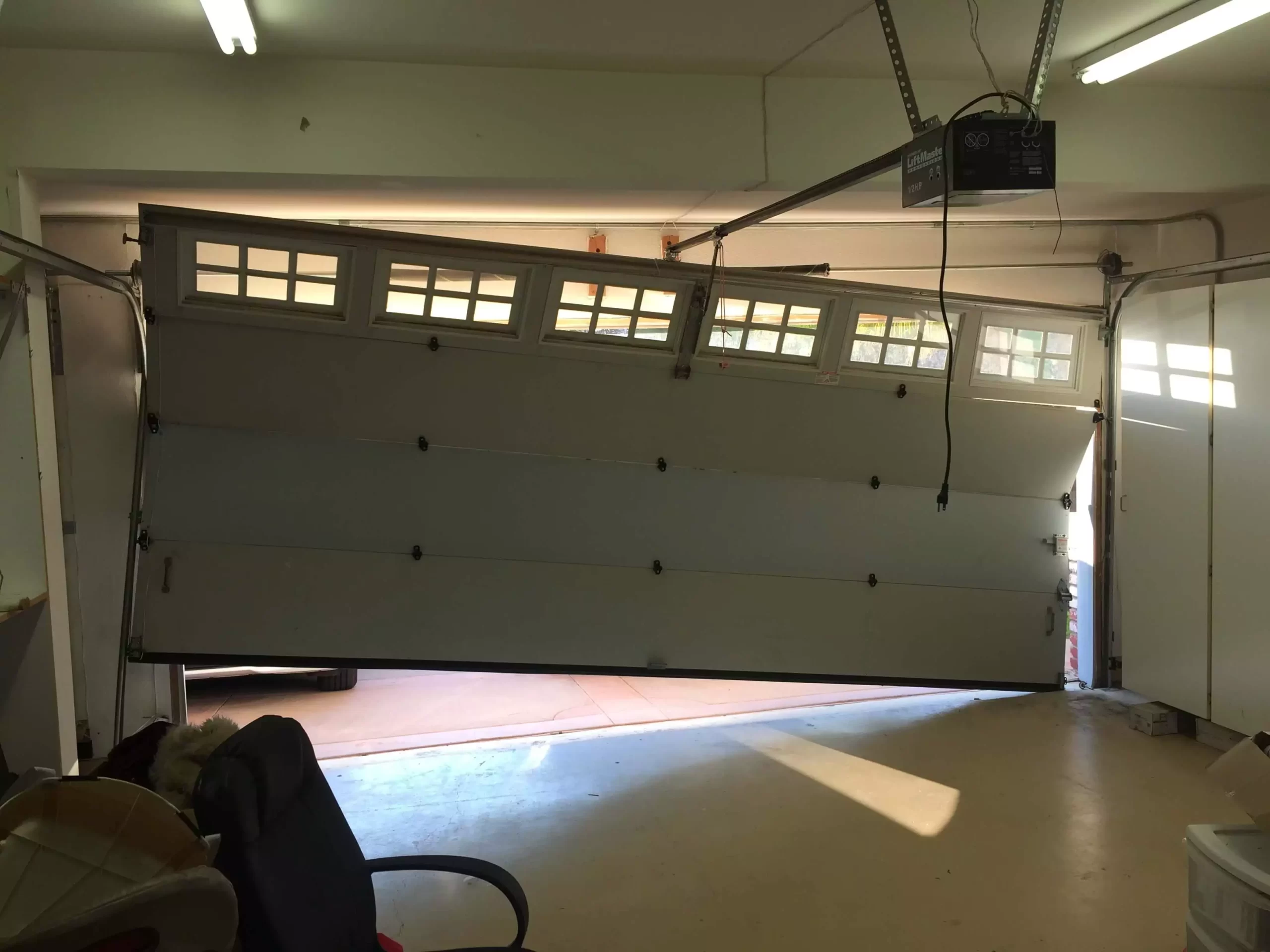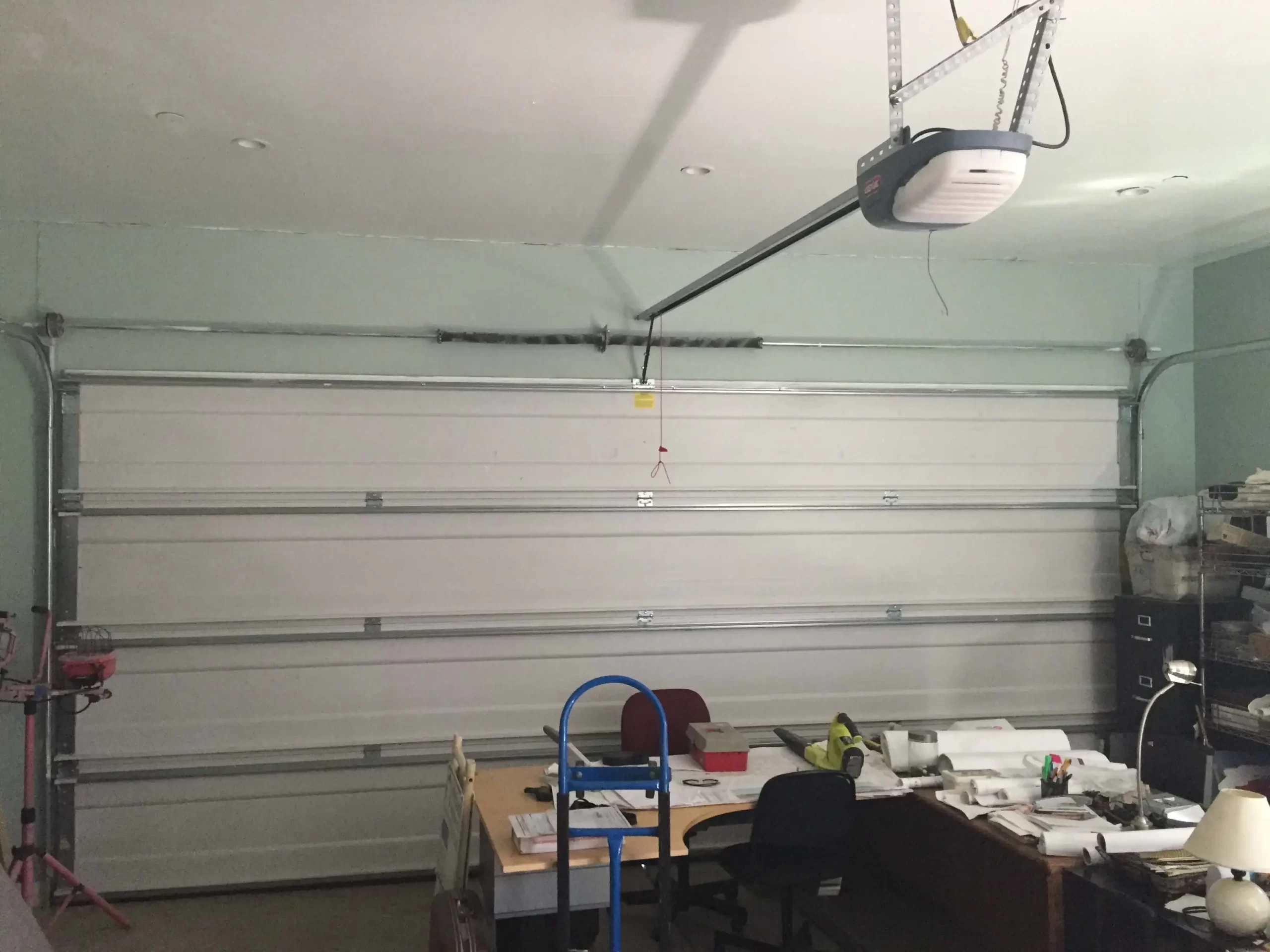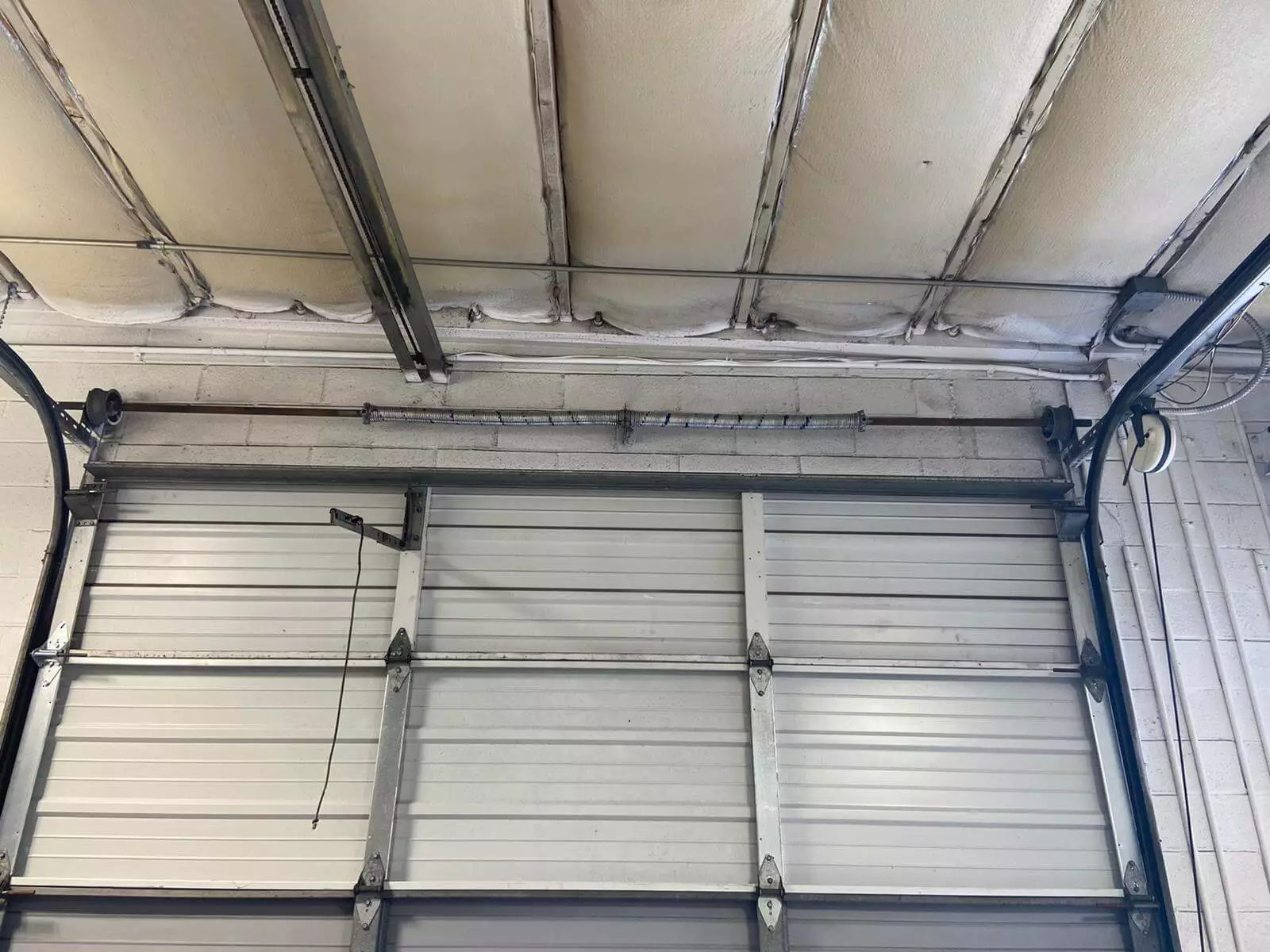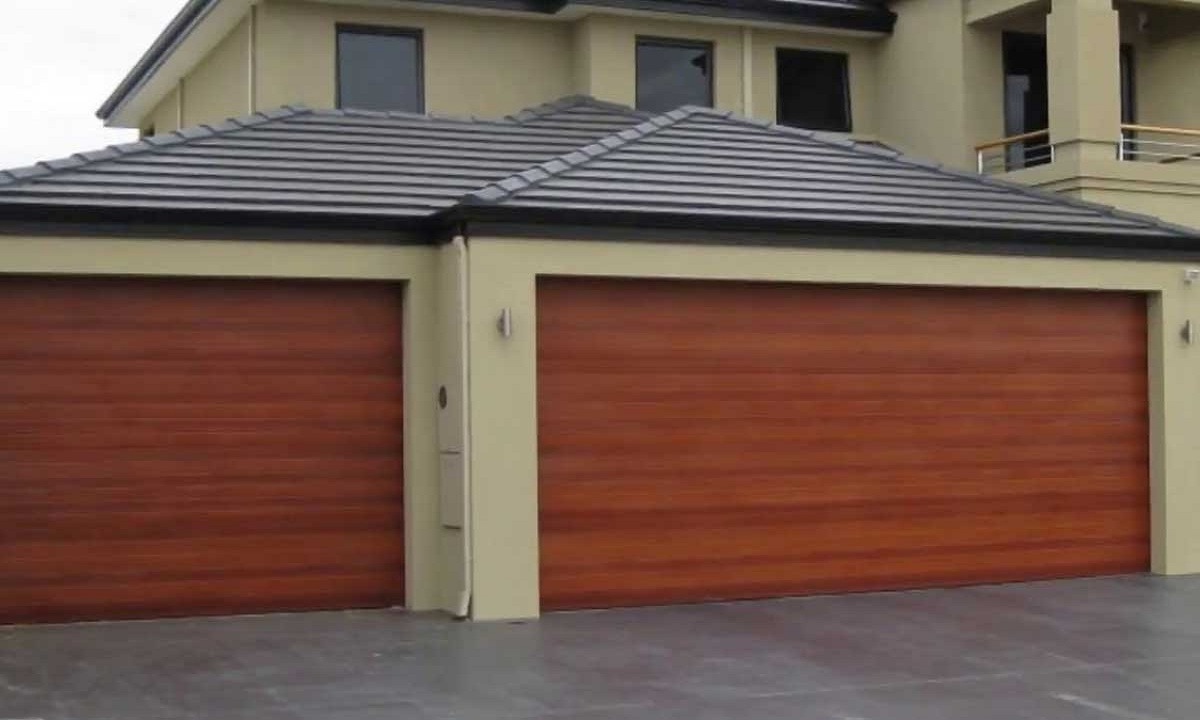Is your garage door giving you trouble? Don’t worry, we’ve got you covered! If your garage door has gone off track, it can be frustrating and inconvenient. But fear not, because in this easy-to-follow guide, we’ll show you how to get your garage door back on track and rolling smoothly again. Let’s dive right in and fix that door together.

Content
Gathering the Tools and Materials
Before you start fixing your garage door that has gone off track, it’s essential to gather the necessary tools and materials for the job. This will ensure that you have everything you need within reach, saving you time and frustration. Plus, it’s always better to be prepared!
Tools You’ll Need
- Safety Gear: Prioritize your safety by wearing protective gear such as safety goggles, gloves, and closed-toe shoes.
- Ladder: A sturdy ladder will help you safely reach and work on the tracks and rollers.
- Adjustable Wrench: This versatile tool will come in handy for loosening and tightening nuts and bolts.
- Socket Wrench Set: Ensure you have a socket wrench set with various sizes to fit different fasteners.
- Screwdriver Set: Invest in a set of both flathead and Phillips-head screwdrivers for different types of screws.
- Pliers: Have a pair of pliers available to help with gripping and bending tasks.
- Level: A level will assist you in checking the alignment of the tracks.
- Rubber Mallet: A rubber mallet can be used to gently tap and adjust the tracks without causing damage.
Materials You’ll Need
- Replacement Rollers: If your rollers are damaged or worn-out, have replacement rollers on hand.
- Lubricant: Use a garage door lubricant to ensure smooth operation of the tracks and rollers.
- Cleaning Solution: Prepare a mild cleaning solution to remove dirt and debris from the tracks.
- Rags: Keep a few clean rags nearby to wipe away excess lubricant or cleaning solution.
Safety Precautions
- Power Off: Before starting any repairs, disconnect the power to the garage door opener to avoid accidental activation.
- Secure the Door: Use vice grips or clamps to secure the door in place while working on it.
- Caution with Springs: Be extremely cautious when dealing with the garage door springs, as they are under high tension and can cause serious injury if mishandled.
- Work with a Buddy: It’s always a good idea to have someone with you for assistance, especially when working with heavy garage doors.
Step-by-Step Guide: Getting the Garage Door Back on Track
Is your garage door off track? Don’t worry, we’re here to help you get it back on track and working smoothly. Follow these step-by-step instructions to fix the issue and have your garage door operating like new in no time!
Disconnecting the Garage Door Opener
To ensure safety during the repair process, it’s important to disconnect the Garage door spring repair Newport News. This prevents any accidental activation that could lead to injuries or further damage. Here’s how you can do it:
- Locate the emergency release cord or lever on the opener mechanism.
- Pull the cord or activate the lever to disengage the opener from the door.
- Once disconnected, manually lift and lower the door to test that it moves freely.
Aligning the Tracks
Proper alignment of the garage door tracks is crucial for smooth operation. Follow these steps to align the tracks using a level:
- Inspect the tracks for any obstructions or debris that may be causing misalignment. Clear away any dirt or objects.
- Use a level to check the vertical alignment of the tracks. Adjust as needed by tapping gently with a rubber mallet.
- Ensure the tracks are parallel by measuring the distance between them at several points along their length. Adjust if necessary.
Fixing Roller Misalignment
Misaligned rollers can also cause a garage door to go off track. Here’s how you can realign the rollers within the track:
- Inspect the rollers for any signs of damage or wear. Replace any damaged or worn-out rollers with new ones.
- Apply a lubricant specifically designed for garage doors to the rollers. This helps reduce friction and ensures smoother operation.
Replacing Damaged Rollers
If your garage door rollers are damaged or worn-out, it’s essential to replace them. Follow these steps for a successful replacement:
- Identify the type and size of the rollers currently installed on your garage door.
- Purchase replacement rollers that match the same specifications.
- Use a wrench or pliers to remove the old rollers and install the new ones according to the manufacturer’s instructions.
Inspecting and Adjusting the Cable
Inspecting the cable is crucial to ensure its integrity and prevent future issues. Follow these steps to inspect and adjust the cable:
- Look for any signs of cable damage, such as fraying or rusting. If damage is found, it’s best to replace the cable.
- To adjust the cable tension, locate the adjustment mechanism near the bottom bracket.
- Use a wrench to tighten or loosen the cable as needed, ensuring it is properly tensioned.
Testing the Garage Door
After completing the repairs, it’s important to test the garage door to ensure it’s functioning correctly. Follow these steps for a final test:
- Reconnect the garage door opener to the door, following the manufacturer’s instructions.
- Activate the opener and observe the door’s movement.
- Listen for any unusual noises or signs of further issues. If any problems persist, it’s advisable to seek professional assistance.
Preventive Maintenance Tips
To ensure the long-term smooth operation of your garage door and prevent off-track problems, regular preventive maintenance is key. By following these simple practices, you can avoid future headaches and keep your garage door in top shape.
Regular Inspection
Performing regular inspections of your garage door can help identify potential issues before they escalate. Here are some inspection tips:
- Check the tracks for any signs of damage, such as dents or misalignment. If any issues are found, address them promptly.
- Inspect the rollers for wear or damage. Replace any worn-out rollers to prevent them from causing the door to go off track.
- Examine the cables for fraying or signs of wear. If any damage is detected, it’s best to replace the cables to ensure safe operation.
- Test the balance of the door by disconnecting the opener and manually lifting it. The door should stay in place when partially open. If it doesn’t, adjust the springs or seek professional assistance.
Regular Lubrication
Proper lubrication is essential for the smooth operation of your garage door. Follow these lubrication suggestions:
- Apply a silicone-based lubricant to the rollers, hinges, and tracks. This reduces friction and ensures smoother movement.
- Lubricate the springs, but exercise caution as they are under high tension. Consult the manufacturer’s guidelines or seek professional help for spring lubrication.
- Avoid using excessive amounts of lubricant, as it can attract dirt and debris, leading to potential issues.
Conclusion
Getting your garage door back on track doesn’t have to be a daunting task. By following these simple steps, you can restore your door’s smooth operation in no time. Remember to disconnect the opener, realign the tracks, and ensure all components are in place. With a little effort, you’ll have your garage door back on track and functioning properly again.
FAQs
What should I do if my garage door goes off track?
If your garage door goes off track, the first step is to disconnect the opener to ensure safety. Then, carefully realign the tracks by gently pushing the door back into place. Make sure all components are properly aligned and tighten any loose bolts or screws.
Can I fix a garage door that has come off track by myself?
While it is possible to fix a garage door that has come off track on your own, it is recommended to seek professional assistance. Garage doors are heavy and complex systems, and improper handling can lead to further damage or personal injury. It’s best to rely on trained technicians for such repairs.
Why did my garage door come off track in the first place?
There can be several reasons why a garage door comes off track. It could be due to worn-out rollers, damaged tracks, loose bolts or screws, or even improper installation. Regular maintenance and inspection can help identify and address these issues before they lead to off-track problems.
How often should I inspect my garage door to prevent it from going off track?
It is recommended to inspect your garage door at least once every three months. Regular inspections allow you to identify any signs of wear, damage, or misalignment and take preventive measures to avoid off-track issues. Additionally, it’s important to perform immediate inspections if you notice any unusual noises or movements.
Can lubrication help prevent my garage door from going off track?
Yes, proper lubrication can help prevent your garage door from going off track. Regularly applying a silicone-based lubricant to the rollers, hinges, and tracks reduces friction and ensures smoother movement. However, lubrication alone may not solve all issues, and it’s important to address any underlying problems through thorough inspection and maintenance.

Jack is a blogger with a passion for technology who has been writing about the latest in the world of gadgets and gizmos. They are an avid reader of Science-Fiction novels and love to spend time with their wife and kids.



